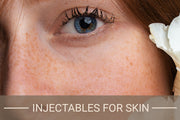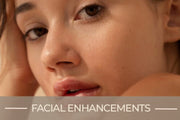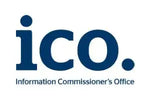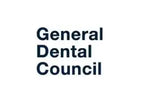When Can I Sleep On My Side After Botox?

Content Verification



Summary of Key Points
- 💡 Quick overview: How Botox impacts your sleep positions
- ⏰ Avoid sleeping on your side for at least 4-6 hours post-treatment
- 🛏️ Stick to sleeping on your back to prevent pressure on treated areas
- ⏳ Remember, good sleep hygiene helps optimise Botox results!
Key Advice and Tips from Our Experts
- 🌟 "Patience is key—give your face time to settle after Botox." - Dr. Emily Brown, Aesthetic Specialist
- 💡 "Try using extra pillows to help keep your head elevated at night." - Dr. Olivia Green, Skin & Botox Expert
- ⚡ "Avoid any pressure on treated areas for at least 4 hours to ensure optimal results." - Dr. James White, Cosmetic Consultant
Botox Injections have become one of the most popular cosmetic procedures for reducing the appearance of wrinkles and fine lines. Known for their effectiveness in anti-ageing treatments, Botox Anti-Wrinkle Injections offer a non-invasive solution to smooth the skin and refresh the face. However, achieving the best results requires proper aftercare, especially when it comes to your sleeping position.
Many patients ask, "When can I sleep on my side after Botox?" This is a crucial question, as the right post-treatment care can make all the difference in the longevity and success of your treatment. In this article, we will address this common concern and provide expert advice from leading professionals in the field, including Dr. Laura Geige, Dr. Snieguole Geige, and Dr. Giedre Narkiene. By the end, you will have a clear understanding of when it's safe to sleep on your side after Botox and how to take care of your skin for optimal results.
What Happens After Botox Injections?
Botox Treatments are widely used to target wrinkles and fine lines by temporarily relaxing the muscles underneath the skin. The procedure involves the injection of small amounts of botulinum toxin into specific areas of the face, typically around the forehead, eyes, or mouth. The toxin works by blocking nerve signals to the muscles, which prevents them from contracting and causing wrinkles.
This process leads to smoother skin and a more youthful appearance, but it’s important to note that the effects are temporary, generally lasting three to six months.
Dr. Laura Geige, a leading expert in skin treatments from It’s Me & You, explains, “Botox Anti-Wrinkle Injections help relax the facial muscles, resulting in reduced wrinkle formation. While the procedure is minimally invasive, there are a few common aftereffects, such as mild swelling or bruising around the injection site."
After receiving Botox Injections, it’s crucial to follow proper aftercare instructions to maximise the results. Patients are typically advised to avoid putting pressure on the treated areas, including refraining from lying down flat for a few hours post-treatment. Avoiding excessive facial movement and direct pressure ensures the Botox stays in place and works as intended.
Why Sleeping Position Matters After Botox Treatments
After Botox Injections, the sleeping position you choose plays a critical role in ensuring optimal results. Sleeping on your side too soon after the procedure can put undue pressure on the treated areas, potentially affecting the outcome of the treatment. This is particularly important in the first 24 to 48 hours following the procedure when the botulinum toxin is still settling into the targeted muscles.
Sleeping on your side may cause the Botox to shift or settle unevenly, leading to a distorted appearance or asymmetrical results. Additionally, applying pressure to the areas where the injections were made can increase the risk of bruising, which may prolong the recovery process and affect the overall aesthetic results.
Dr. Snieguole Geige, a seasoned medical doctor, advises, “Side sleeping can compromise the distribution of the Botox, causing uneven effects or even additional bruising. It's essential to avoid pressure on the treated areas during the initial recovery period to ensure the best results.”
To avoid these risks, it’s advisable to sleep on your back in the first few days after Botox Injections, keeping your head elevated with extra pillows to prevent direct contact with the treated areas. This simple adjustment can help you maintain the natural, smooth look that Botox is known for.
When Can I Sleep on My Side After Botox?
The question of when it’s safe to sleep on your side after Botox Injections is common, and understanding the appropriate timeline is essential for the best results. Generally, it’s recommended to avoid sleeping on your side for at least 24 to 48 hours after receiving Botox. During this time, the botulinum toxin is still settling into the muscles, and any pressure could impact its effectiveness or cause uneven results.
After the initial 48-hour period, many patients can gradually return to their normal sleeping positions, including side sleeping. However, it’s important to remain mindful of your body’s reaction, as everyone heals at a different pace.
Dr. Giedre Narkiene, a skilled medical doctor specialising in dermatology, shares, “For the best outcomes, I typically recommend patients wait at least 48 hours before resuming side sleeping. It allows the Botox enough time to take full effect and settle into the muscles without interference.”
While 48 hours is a safe starting point, some individuals may find that waiting a bit longer—up to 72 hours—offers even better results. The key is to avoid any excessive pressure on the treated areas in the early stages of recovery, ensuring that your Botox Anti-Ageing treatments remain effective.
How to Sleep Comfortably After Botox Injections
After receiving Botox Injections, it's essential to sleep in a way that supports the healing process while still allowing for a good night’s rest. Since sleeping on your side is not recommended for the first 24-48 hours, sleeping on your back is the best alternative. This position helps keep pressure off the treated areas, ensuring that the Botox has time to settle into the muscles without interference.
To enhance comfort, consider using extra pillows to elevate your head. This will not only prevent you from rolling onto your side but also encourage blood flow to the face, which can reduce swelling and improve your recovery. Sleeping with your head slightly propped up helps maintain the ideal posture for healing, reducing the risk of bruising or discomfort.
Additionally, it’s advisable to avoid any sudden movements or excessive shifting while sleeping. Make sure your pillow is soft and supportive, and ensure that your neck and back are aligned for a comfortable position. Following these simple tips can help ensure that your Botox Anti-Wrinkle Injections heal properly, allowing you to wake up with smoother, refreshed skin.
Other Key Aftercare Tips for Botox Treatments
Proper aftercare is essential for achieving the best possible results from Botox Injections. In addition to paying attention to your sleeping position, there are several other important guidelines to follow. One of the main recommendations is to avoid intense physical activity for at least 24 to 48 hours after treatment. Exercise can increase blood circulation, which may lead to the Botox settling unevenly or causing unnecessary swelling and bruising.
It’s also important to remain upright for a few hours following Botox Treatments. This helps ensure that the toxin remains in the targeted muscles without migrating to other areas. Lying down immediately after treatment can increase the risk of the Botox shifting, which could result in unsatisfactory results.
Furthermore, avoid touching or massaging the treated areas for at least a few days. Rubbing or pressing on the injection sites can cause the Botox to move or be distributed unevenly, compromising the intended effects of the Anti-Wrinkle Injections.
Dr. Laura Geige advises, “To maintain the results of Botox Anti-Ageing treatments, it’s crucial to follow all aftercare instructions. The first few days of recovery are key to ensuring that the Botox delivers smooth and lasting results.”
By following these simple aftercare tips, you can ensure that your Botox for wrinkles provides the maximum benefit, keeping your skin youthful and wrinkle-free.
What to Avoid in the First Few Days After Botox Injections
In the days immediately following your Botox Injections, there are several actions you should avoid to ensure the best possible results. Here’s a list of key things to refrain from during the first 24 to 48 hours:
- Lying Down Flat: Avoid lying completely flat for at least 4 hours after treatment. This can increase the risk of the Botox moving to unintended areas, potentially affecting the treatment's outcome.
- Sleeping on Your Side: As previously discussed, side sleeping should be avoided for the first 24-48 hours. Pressure on the treated areas can cause uneven results or bruising.
- Heavy Exercise or Strenuous Activity: Intense physical activity can increase blood flow to the face, which may cause Botox to move away from the injection sites. It's advisable to refrain from heavy exercise for at least 24-48 hours.
- Touching or Massaging the Treated Areas: Refrain from touching, rubbing, or massaging the areas where the Botox was injected. This could disrupt the toxin’s placement, leading to suboptimal results.
- Exposure to Heat: Avoid hot tubs, saunas, or direct sunlight, as heat can increase swelling and interfere with the Botox’s effectiveness.
When to Contact Your Doctor After Botox Injections
While Botox Injections are generally safe, it’s essential to monitor your recovery and recognise any signs that may indicate a problem. Though mild bruising or swelling is common after treatment, there are specific signs you should look out for, such as:
- Persistent Pain: If you experience significant pain at the injection site that doesn’t subside after a few hours, it’s important to seek medical advice.
- Unusual Bruising or Swelling: While some swelling or bruising is normal, excessive or unusual bruising could be a sign of complications.
- Unexpected Reactions: If you notice any unexpected side effects, such as difficulty breathing or swallowing, or an allergic reaction, contact your doctor immediately.
Dr. Laura Geige advises, “If you experience any unusual symptoms or discomfort that lasts more than a few days, don’t hesitate to reach out to a medical professional. It’s always better to consult early than risk further complications.”
If you are concerned about any of these symptoms, or if you simply want to ensure your Botox treatment is progressing as expected, don’t hesitate to contact your practitioner. They can offer guidance on how to care for your skin and ensure your results are as smooth and natural as possible.
The Bottom Line
Following proper aftercare is essential to achieving the best results from Botox Injections, especially when it comes to your sleeping position. Avoiding side sleeping for at least 24-48 hours helps ensure that the Botox settles correctly, preventing uneven results and bruising. By planning your post-treatment recovery and adhering to key aftercare guidelines, you can maximise the benefits of your Botox Anti-Wrinkle Injections. Whether you’re receiving Botox Treatments in London or elsewhere, taking these steps will ensure smoother, more natural-looking results and help you enjoy the rejuvenating effects for months to come.
Disclaimer: The information in this article is for educational purposes only. Always seek independent medical advice from a qualified doctor or practitioner regarding your personal health condition.




























